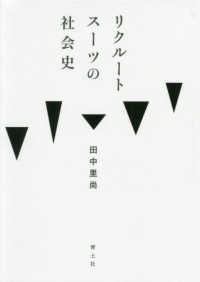Full Description
Artists have often provided the earliest demonstrations of conscience and ethical examination in response to political events. The political shifts that took place in the 1960s were addressed by a revival of folk music as an expression of protest, hope and the courage to imagine a better world. This work explores the relationship between the cultural and political ideologies of the 1960s and the growing folk music movement, with a focus on musicians Phil Ochs; Joan Baez; Peter, Paul and Mary; Carolyn Hester and Bob Dylan.
Contents
Table of Contents
Preface
Introduction
Part I. Mississippi Needs Folk Singers
1. Background
2. Senator Keating Discovers a Crack in the Nation's Foundation
3. The Schizophrenic World of the Protest Song
4. Bob Moses Attacks Mississippi
5. Here's to the State of Mississippi
6. Carolyn Hester Goes to Mississippi
7. Joan Baez Boards the Mississippi Train
8. Peter, Paul and Mary
9. Bob Dylan: The Reluctant Spokesman
10. After the Summer Comes the Fall
Part II. "Hey, Hey, LBJ, How May Kids
Did You Kill Today?"
11. The Radicalizing of Tom Hayden
12. Lyndon Johnson Fights a War on Two Fronts: In Vietnam and in the Streets
13. The Music of the People
14. Music and the Prefigurative Culture
15. Rise of the Prefigurative Culture
16. "Lyndon Johnson Told the Nation"
17. Impatience Leads to Escalation
18. The Chicago Seven Get Famous
19. The New Left Loses Its Credibility
20. The Shift in Academia: What Is Relevant?
Part III. Burn, Baby, Burn
21. Radicalism in Both Politics and Music Dies
22. The Death of Music as Revolution
23. You Don't Need a Weatherman...
Conclusion
Chapter Notes
Bibliography
Index








